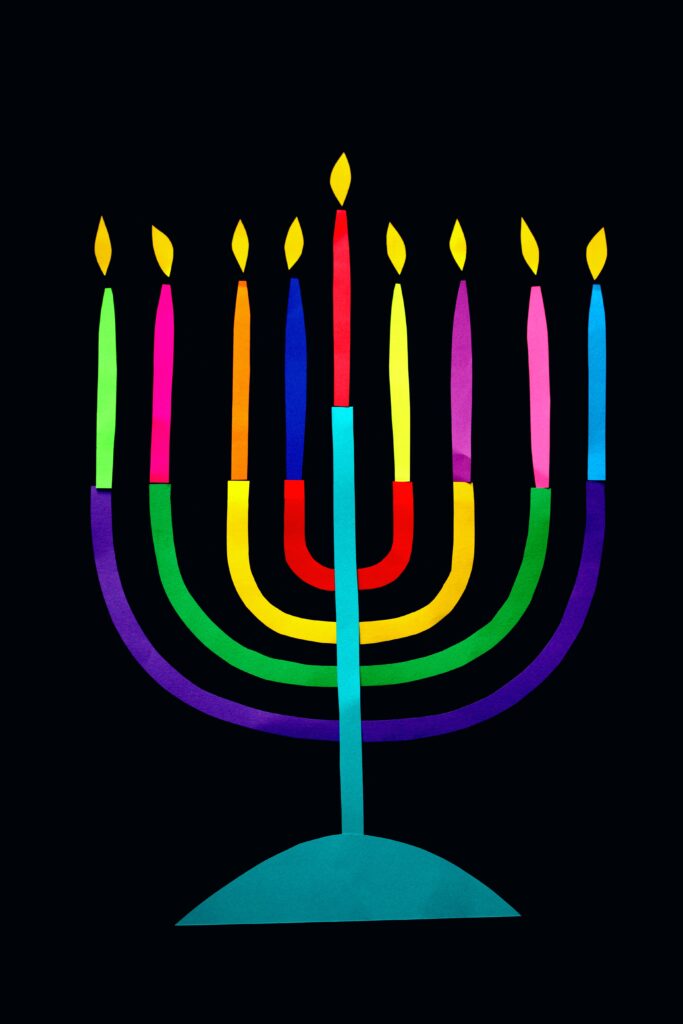In the fast-paced digital world, many of us are seeking solace and understanding in the depths of spirituality and the human psyche. That’s why I’m excited to take you on a journey that delves deep into the nexus of religion and healing, exploring practices from around the world. Together, we’ll explore the transformative power of self-awareness, investigate the scientific basis behind spiritual experiences, and understand the psychological implications of various world spiritual traditions. From healing scripture verses to the healing role of love, we’ll uncover the wisdom that bridges the gap between psychology and spirituality, allowing us to live more mindfully and tap into the interconnectedness of all things. Get ready to embark on a path of personal healing and growth as we navigate the intriguing intersection of spirituality and psychology.
Understanding Religion and Healing
Religion and healing have long been intertwined, with many cultures and belief systems incorporating spiritual practices into their methods of promoting well-being. The connection between religion and healing goes beyond mere superstition or blind faith; it encompasses a deep understanding of the mind-body-spirit connection and the power of faith in promoting healing.
Exploring the connection between religion and healing
The connection between religion and healing can be traced back to ancient times, where spiritual practices were seen as essential for maintaining physical and emotional well-being. Across different religious traditions, there is a belief in the existence of a higher power or divine force that can provide healing and restoration to individuals. This belief forms the foundation of religious healing practices and is often accompanied by rituals, prayers, and ceremonies.
The role of spirituality in promoting healing
Spirituality plays a significant role in promoting healing, as it provides individuals with a sense of purpose, meaning, and connection to something beyond themselves. Spiritual practices such as prayer, meditation, and reflection can help individuals tap into their inner resources and find solace during times of illness or distress. Moreover, spirituality can provide individuals with a framework for understanding suffering and finding hope in the face of adversity.
Different perspectives on the nexus of religion and healing
There are various perspectives on the nexus of religion and healing, with different religious traditions offering unique insights and approaches. From the Christian belief in divine healing to the Indigenous practices of traditional healing, these perspectives highlight the diverse ways in which spirituality can be integrated into the healing process. Understanding these different perspectives allows for a more comprehensive understanding of the healing potential of religion.
Religious Healing Practices
Religious healing practices encompass a wide range of methods and rituals that aim to promote physical, emotional, and spiritual well-being. These practices often involve engaging with the divine or higher power through prayer, rituals, and ceremonies. Understanding and exploring the effectiveness of these practices can provide valuable insights into the power of spirituality in healing.
Prayer as a healing practice
Prayer is a common healing practice across many religious traditions. It involves communicating with a higher power, expressing gratitude, asking for guidance, and seeking healing. The act of prayer not only provides a sense of comfort and solace but is also believed to have a tangible impact on a person’s well-being. Scientific research has shown that prayer can influence physiological and psychological processes, promoting healing and resilience in individuals.
Rituals and ceremonies in religious healing
Rituals and ceremonies are integral to religious healing practices. These rituals often involve specific actions, symbols, and gestures that hold significance within a religious context. From the use of holy water in Christianity to the chanting and incense burning in Buddhism, these rituals create a sacred space and help individuals connect with the divine. The power of rituals lies in their ability to evoke a sense of awe, reverence, and collective energy that can facilitate healing.
The power of faith in promoting healing
Faith is a central component of religious healing practices. It involves a deep trust and belief in the power of a higher power or divine force to bring about healing, restoration, and transformation. The power of faith lies in its ability to provide individuals with hope, resilience, and an unwavering belief in their ability to overcome challenges. Scientific studies have shown that individuals with strong religious or spiritual beliefs often experience better health outcomes, suggesting that faith plays a significant role in promoting healing.

Traditional Healing Techniques
Traditional healing techniques are deeply rooted in indigenous cultures and offer unique insights into the power of spirituality in promoting well-being. These techniques often emphasize the interconnectedness of the mind, body, and spirit and take a holistic approach to healing.
Traditional healing practices in indigenous cultures
Indigenous cultures around the world have developed rich traditions of healing practices that draw on the wisdom of their ancestors and the natural world. These practices often involve a combination of herbal remedies, energy work, rituals, and ceremonies. Traditional healers, often referred to as shamans or medicine men/women, play a vital role in facilitating the healing process and restoring balance in individuals.
Shamanic healing rituals and their effectiveness
Shamanic healing rituals are an integral part of many indigenous cultures. These rituals involve the shaman entering into a trance or altered state of consciousness to connect with the spirit world and access healing energies. Through practices such as soul retrieval, energy clearing, and extraction, shamans work to remove blockages and restore harmony and well-being. The effectiveness of shamanic healing rituals lies in their ability to address the spiritual and energetic aspects of illness and bring about profound healing and transformation.
Ayurveda and its holistic approach to healing
Ayurveda, an ancient system of medicine from India, takes a holistic approach to healing that integrates the mind, body, and spirit. According to Ayurvedic principles, imbalances in the doshas (energetic forces) can lead to illness and disease. Ayurvedic healing techniques, such as herbal medicine, dietary changes, yoga, and meditation, aim to restore balance and promote well-being. Ayurveda highlights the importance of individualized healing practices and recognizes the unique needs of each person in their journey towards health and wholeness.
Biblical Perspectives on Healing
The Bible and other religious texts contain numerous references to healing and provide insights into the concept of divine healing. Understanding these perspectives can shed light on the role of faith, forgiveness, and community support in the healing process.
Healing scriptures in different religious texts
Many religious texts, including the Bible, contain scriptures that speak to the power of healing. These scriptures often emphasize the role of faith, prayer, and divine intervention in bringing about healing. For example, in the Christian tradition, the New Testament is replete with stories of Jesus healing the sick and the importance of faith in receiving healing.
Exploring the concept of divine healing
The concept of divine healing is central to many religious traditions. It refers to the belief that healing can occur through the intervention of a higher power or divine force. Divine healing often requires a deep faith and trust in the divine plan, as well as a willingness to surrender and receive the healing that is available. The concept of divine healing raises questions about the relationship between individuals’ actions and the involvement of the divine in the healing process.
The role of forgiveness in religious healing
Forgiveness plays a significant role in religious healing practices. Many religious traditions emphasize the importance of forgiveness in releasing emotional pain, promoting inner healing, and restoring relationships. From a psychological perspective, forgiveness has been shown to have numerous health benefits, including reduced stress, improved mental health, and enhanced overall well-being. The role of forgiveness in religious healing highlights the interconnectedness of spiritual, emotional, and physical well-being.

Spiritual Practices for Healing
Spiritual practices are valuable tools for promoting healing and well-being. These practices often involve cultivating mindfulness, tapping into spiritual energy, and harnessing the power of positive affirmations and intentions.
Meditation and its role in promoting healing
Meditation is a powerful spiritual practice that has been used for centuries to promote healing and cultivate inner peace. Through meditation, individuals can quiet the mind, reduce stress, and create a sense of inner stillness. Research has shown that meditation can have a profound impact on physical and mental health, including reducing blood pressure, improving immune function, and enhancing overall well-being.
Energy healing techniques in different spiritual traditions
Energy healing techniques, also known as energy medicine, are based on the belief that all living beings have an energetic field that can be influenced and manipulated for healing purposes. Various spiritual traditions, such as Reiki, Qi Gong, and Pranic healing, utilize these techniques to restore balance and promote well-being. Energy healing works by clearing blockages, balancing the energetic system, and enhancing the flow of life force energy.
The power of affirmations in spiritual healing
Affirmations are positive statements that are repeated to oneself, often with the intention of shifting beliefs and thought patterns. In the realm of spiritual healing, affirmations are used to reinforce positive beliefs, release negative energy, and cultivate a healing mindset. By regularly affirming positive statements such as “I am worthy of love and healing,” individuals can reprogram their subconscious mind and create a more supportive and empowering internal dialogue.
Religious and Psychological Perspectives
The intersection of religion and psychology provides a rich field of study and exploration. Understanding the psychological insights on the healing power of religious practices and the role of spirituality in psychotherapy can offer valuable insights into the healing potential of religion.
Understanding the intersection of religion and psychology
The intersection of religion and psychology explores how religious beliefs and practices can influence psychological well-being and personal growth. This field of study explores topics such as religious coping mechanisms, the impact of religious beliefs on mental health, and the role of spirituality in resilience and recovery. By understanding the psychological aspects of religion, it becomes possible to integrate spiritual practices into therapeutic interventions effectively.
Psychological insights on the healing power of religious practices
Psychological research has shed light on the healing power of religious practices. Studies have shown that religious practices such as prayer, meditation, and engaging with religious communities can have numerous psychological benefits, including reduced stress, increased resilience, and improved overall well-being. Understanding the psychological mechanisms behind these practices can enhance their efficacy and inform therapeutic interventions.
The role of spirituality in psychotherapy
Spirituality plays a significant role in psychotherapy, particularly in approaches that incorporate a holistic view of health and well-being. Integrating spirituality into therapy allows individuals to explore the deeper meaning and purpose in their lives, address existential concerns, and access inner resources for healing and growth. By recognizing the interplay between spirituality and psychology, therapists can create a more comprehensive and impactful healing journey for their clients.
Cross-Cultural Healing Practices
The exploration of cross-cultural healing practices allows for a deeper understanding of the universal aspects of healing as well as the cultural nuances that shape healing techniques. By comparing and contrasting different cultural approaches, it becomes possible to appreciate the importance of cultural sensitivity in healing practices.
Comparative analysis of healing practices from different cultures
Comparative analysis of healing practices from different cultures reveals both commonalities and differences in approaches to healing. While specific rituals and techniques may vary, the underlying principles of connection, balance, and restoration of well-being are often universal. Exploring different healing practices can expand our understanding of the human experience and challenge ethnocentrism.
Commonalities and differences in cross-cultural healing techniques
Cross-cultural healing techniques often share common goals, such as restoring harmony, addressing imbalances, and promoting well-being. However, the specific methods and rituals employed can vary significantly across cultures. For example, while some cultures may rely on herbal remedies and energy work, others may use sound therapy or acupuncture. By recognizing these different techniques, we can appreciate the richness and diversity of approaches to healing.
The importance of cultural sensitivity in healing practices
Cultural sensitivity is crucial when engaging in healing practices from different cultures. Recognizing and respecting cultural beliefs, practices, and worldviews is essential to ensure that healing interventions are appropriate and effective. Cultural sensitivity also involves understanding the historical contexts and power dynamics that shape healing practices and being mindful of the potential for cultural appropriation or harm.
Case Studies in Religious Healing
Examining real-life examples of religious healing experiences can provide valuable insights into the impact of religious beliefs on healing outcomes and the role of community support in the healing process.
Examining real-life examples of religious healing experiences
Real-life examples of religious healing experiences provide tangible evidence of the power of spiritual practices in promoting healing and well-being. Stories of miraculous healings, transformative journeys, and profound shifts in individuals’ lives offer inspiration and hope. By studying these case studies, we can gain a deeper understanding of the healing potential of religion and the myriad ways in which it can manifest in people’s lives.
The impact of religious beliefs on healing outcomes
Religious beliefs can have a profound impact on healing outcomes. Belief in a higher power, divine intervention, and the significance of faith has been shown to enhance well-being, increase hope, and facilitate recovery. These beliefs can shape individuals’ perceptions of illness, influence treatment decisions, and provide a source of strength and resilience during challenging times.
The role of community support in religious healing
Community support plays a vital role in religious healing practices. Religious communities often provide a supportive network of like-minded individuals who can offer prayers, guidance, and practical assistance during times of illness or distress. The collective energy and social connection that come from belonging to a religious community can be a powerful source of healing and emotional support.
Controversies and Critiques
While religion and healing have their strengths, there are also controversies, ethical concerns, and critiques surrounding religious healing practices. Examining these challenges allows for a more balanced and informed perspective on the nexus between religion and healing.
Controversial aspects of religious healing practices
Certain aspects of religious healing practices can be controversial, particularly when they involve extreme beliefs or practices that may be harmful to individuals. Examples include the rejection of medical treatment in favor of faith healing or the manipulation of vulnerable individuals for financial gain. It is important to critically examine these controversial aspects and promote responsible, ethical approaches to healing.
Ethical concerns and challenges in religious healing
Ethical concerns can arise when religious healing practices conflict with established medical standards, undermine informed consent, or exploit vulnerable individuals. Balancing spiritual beliefs with ethical responsibilities and ensuring the well-being of individuals seeking healing are important considerations. An open dialogue and collaboration between religious communities and healthcare professionals can help navigate these ethical challenges.
Critiques of the nexus between religion and healing
Critiques of the nexus between religion and healing often center around issues of scientific validity, cultural relativism, and the potential for harm. Skeptics argue that religious healing practices lack empirical evidence and may rely on placebo effects or subjective experiences. Others caution against imposing religious beliefs and practices on individuals who may adhere to different belief systems or reject religious frameworks altogether. Engaging with these critiques can foster a more nuanced and inclusive understanding of healing.
Future Directions in Religion and Healing
Looking to the future, there are exciting possibilities for innovative approaches to religious healing that embrace a holistic model of health and incorporate advancements in technology.
Exploring innovative approaches to religious healing
Innovation in religious healing involves exploring new ways to integrate spirituality, psychology, and medicine to promote well-being. This may include the development of evidence-based interventions that combine spiritual practices with therapeutic techniques, mindfulness-based approaches to religious rituals and ceremonies, or the integration of technology to facilitate access to religious resources and support.
Embracing a holistic model of health that incorporates religion and spirituality
A holistic model of health recognizes the interplay between physical, emotional, mental, and spiritual well-being. Embracing this model involves acknowledging the role of religion and spirituality in promoting overall health and incorporating spiritual practices and beliefs into healthcare settings. By adopting a holistic approach, individuals can access a comprehensive range of resources and support for their healing journey.
The potential of technology in facilitating religious healing
Technology has the potential to revolutionize religious healing practices and make them more accessible to a wider audience. From online platforms that offer virtual ceremonies and guided meditation to mobile applications that provide resources for prayer, technology can bridge the gap between traditional religious practices and the demands of a digital age. The use of technology in religious healing holds promise for reaching individuals in remote areas, connecting diverse communities, and fostering a global network of support.
In conclusion, the nexus of religion and healing is a complex and multifaceted topic that encompasses diverse practices, perspectives, and approaches. From religious healing practices and traditional techniques to biblical perspectives, psychological insights, and cross-cultural comparisons, the exploration of religion and healing reveals the interconnectedness of spirituality, well-being, and the human experience. By embracing a holistic model of health, acknowledging cultural sensitivities, and fostering innovation, we can tap into the transformative power of religion and spirituality in promoting healing and flourishing in individuals and communities around the world.

